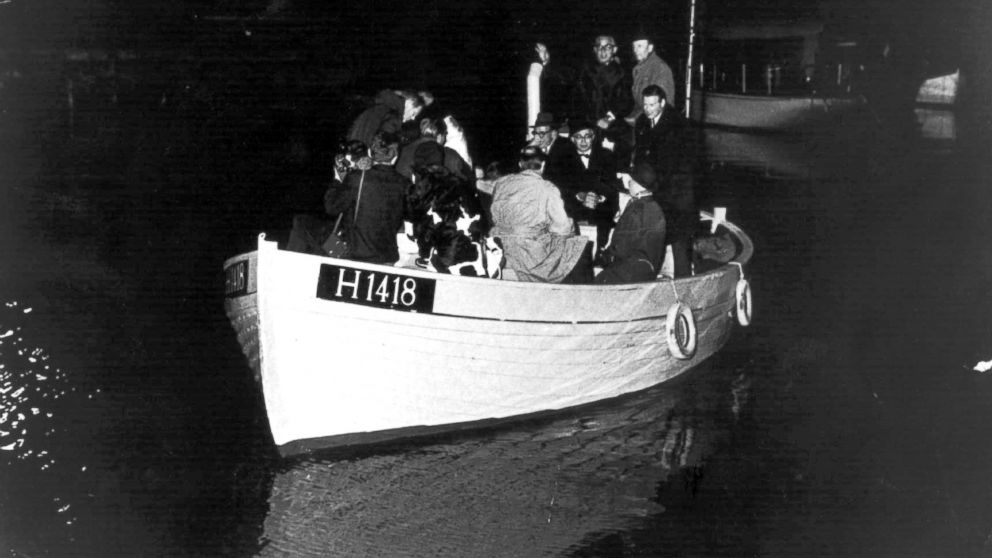How Denmark Saved Its Jews From the Nazis
Thousands of Jews fled Denmark by boat for Sweden during the night hours.

Nov. 3, 2013— -- Denmark was the only European country to save almost all of its Jewish residents from the Holocaust. After being tipped off about imminent roundups by prominent Nazis, resisters evacuated the country's 7,000 Jews to Sweden by boat. A new book examines this historical anomaly.
They left at night, thousands of Jewish families, setting out by car, bicycle, streetcar or train. They left the Danish cities they had long called home and fled to the countryside, which was unfamiliar to many of them. Along the way, they found shelter in the homes of friends or business partners, squatted in abandoned summer homes or spent the night with hospitable farmers. "We came across kind and good people, but they had no idea about what was happening at the time," writes Poul Hannover, one of the refugees, about those dark days in which humanity triumphed.
At some point, however, the refugees no longer knew what to do next. Where would they be safe? How were the Nazis attempting to find them? There was no refugee center, no leadership, no organization and exasperatingly little reliable information. But what did exist was the art of improvisation and the helpfulness of many Danes, who now had a chance to prove themselves.
Members of the Danish underground movement emerged who could tell the Jews who was to be trusted. There were police officers who not only looked the other way when the refugees turned up in groups, but also warned them about Nazi checkpoints. And there were skippers who were willing to take the refugees across the Baltic Sea to Sweden in their fishing cutters, boats and sailboats.
A Small Country With a Big Heart
Denmark in October 1943 was a small country with a big heart. It had been under Nazi occupation for three-and-a-half years. And although Denmark was too small to have defended itself militarily, it also refused to be subjugated by the Nazis. The Danes negotiated a privileged status that even enabled them to retain their own government. They assessed their options realistically, but they also set limits on how far they were willing to go to cooperate with the Germans.
The small country defended its democracy, while Germany, a large, warmongering country under Hitler, was satisfied with controlling the country from afar and, from then on, viewed Denmark as a "model protectorate." That was the situation until the summer of 1943, when strikes and acts of sabotage began to cause unrest. This prompted the Germans to threaten Denmark with court martials and, in late August, to declare martial law. The Danish government resigned in protest.
At this point, the deportation and murder of European Jews had already been underway for some time in other countries that had submitted to Nazi control. In the Netherlands, Hungary, Greece, Lithuania, Latvia and Poland, the overwhelming majority of Jews, between 70 and 90 percent of the Jewish population, disappeared and were murdered. The Nazis deported and killed close to half of all Jews in Estonia, Belgium, Norway and Romania. About a fifth of French and Italian Jews died. As historian Peter Longerich writes, the Holocaust was dependent, "to a considerable extent, on the practical cooperation and support of an occupied country or territory."